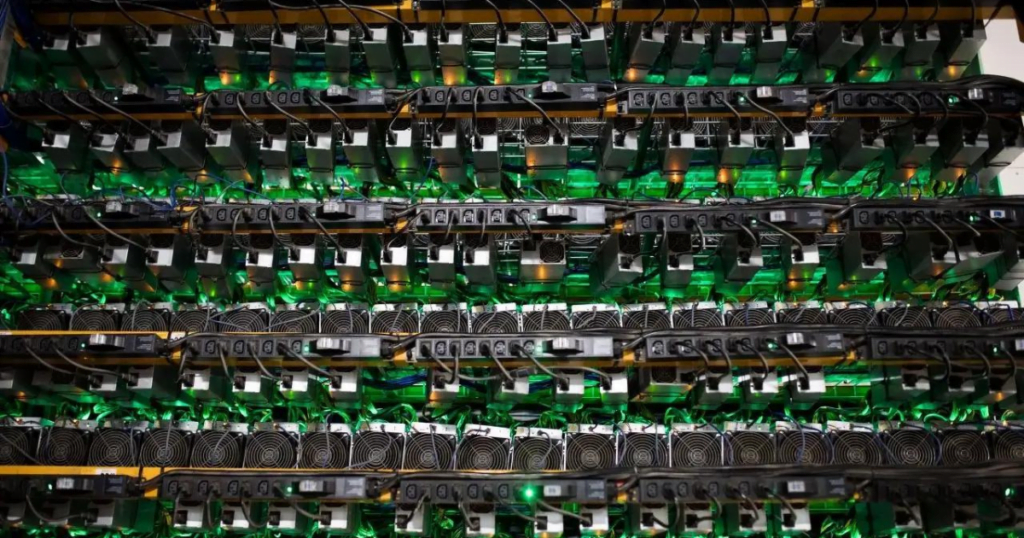How to earn money from crypto mining online
Mining stands at the heart of the roots of the crypto industry, forming the process that first started mining the cryptocurrency – Bitcoin. According to the concept of the Bitcoin network, miners who operate a network based on a proof-of-work consensus algorithm need an incentive to maintain the process of adding new transactions to the blockchain. Incentives are an essential measure to ensure that the whole concept of blockchain maintenance is an intrinsic aspect and liquidity turnover is ensured.
However, mining is far from just setting up a mining rig, powering up cooling equipment, and watching money tickle a digital wallet. The calculations that miners have to consider during their work process include more than just the market rate, but also other factors that affect the overall mining profitability.]
How Miners Earn Profits
All miners engaged in mining coins within PoW networks earn their profits in two major ways – on transaction fees, and on mining subsidies.
When combined, the two sources of payments produce a simple formula that adds up to the total reward collected and paid out to a miner for a block successfully added to the network chain:
Transaction fees + Mining subsidy = Block reward
Transaction fees are commissions paid to miners for making transactions in the blockchain. Every time a coin is transferred from one wallet to another, a record of such asset movement must be hashed. Miners receive rewards for collecting a number of different transactions on the network and placing them into blocks. For example, in the Bitcoin network, a new block is mined approximately every 10 minutes, meaning that all transaction fees paid for that particular block are paid to the miner who mined it. pulled out
As for mining subsidies, these are pre-determined fees set for each block and given to the miner who is the first to successfully mine the next block on the blockchain network. adds to the record. Mining subsidy fees in the Bitcoin network are halved every four years as the computational complexity increases.
Before any block is included, all transactions for routing are placed in a dedicated environment called a memory pool, or mempool for short. Miners look at these mempools and select the transactions they are willing to include in the block they will then mine. The higher the fee set by the sender for the transaction, the higher the chance that it will be selected from the memory pool and moved to the next block. During peak transaction times when the market is most active, fees increase and this results in higher earnings for miners.
All miners are paid their rewards through a special transaction called coinbase. The coinbase is always the first transaction included in a new block added to the blockchain, and is used by miners to accumulate transactions in the block as well as the reward per block.

MEV
MEV, or Miner Extractable Value, also known as Maximal Extractable Value, is another trick that miners have up their sleeves to increase their profit per block. The basic concept foresees adding the ability of miners to queue transactions into a block, thereby increasing the fees for transaction setters to queue their transactions.
Since the placement and speed of transactions play an important role in trading, MEV adopts various tactics that mimic Wall Street’s front running, sandwiching methods, back running, etc. This type of practice is mostly found on blockchains like Ethereum, where smart contracts play an important role in transaction processing. Bitcoin does not yet have an MEV, but the introduction of the Lightning Network could make such practices common there as well.
How Mining Difficulty Affects Transaction Fees
Mining difficulty refers to the complexity of the calculations involved in the process of mining a cryptocurrency as the number of miners increases. Difficulty increases and decreases over time to accommodate the average time required to create a block – 10 minutes on average in the Bitcoin network.
As more miners connect to the network, the hash rate, or overall computing power of the network, increases, which automatically increases the difficulty of mining. In the Bitcoin network, the difficulty level is automatically adjusted every time 2,016 new blocks are added to the network.
There is an inverse relationship between mining difficulty, hash rate, and profitability. As hash rates fell, as seen in early April 2021, when China cracked down on miners, profit values increased, as the number of transactions increased and transaction fees increased. As the hash rate decreases, the difficulty of mining decreases, as the number of miners supporting the network also decreases.In summary, it is becoming more profitable to mine Bitcoin as hash rates are falling and the difficulty of mining is decreasing.
Mining Farms Hubs And Threats Of Centralization
As of April 2021, China has begun a major crackdown on mining sites, which were previously responsible for more than 65 percent of Bitcoin mining worldwide. Authorities intend to shut down up to 90% of all Bitcoin mining facilities.
Such draconian measures have had an immediate impact on the distribution of mining capabilities and have led to a drastic drop in hash rates. Miners are now being forced to either sell their mining rigs entirely at dumping prices or move their facilities overseas to continue operations. Among the major centers that have become havens for crypto miners are Iran, which has equated crypto mining with commercial industrial activity, and Inner Mongolia, which currently stands.for about 8% of all mining worldwide. Kazakhstan is also becoming a major mining hub with around 6% of hash rates moving into the country, which has plenty of space for mining facilities, fairly cheap electricity, and a favorable regulatory framework.
With 65% of all mining concentrated in China, many experts believe that the threat of network centralization is looming. Considering that most of the miners are Chinese nationals, it was possible to imagine a scenario in which like-minded miners could theoretically form a consortium through common communication channels and implement network terminology. can start However, the crackdown in mid-2021 has allayed such hypothetical fears.
How Pools Work
After mining rigs became illegal in China, a major source of mining that miners are turning their attention to is pool mining. The given concept has been around for several years and involves pooling mining capabilities into a single facility so that mining rewards can be distributed evenly among all participants. Pools can either act as arbitrators to manage the contributing miners, or they can act as parties that distribute rewards equitably.
Another method that is equally popular and affordable is cloud mining, which involves random users willing to engage in mining renting mining equipment for a period of time on a contractual basis with a fixed profit level. Let’s take it. This type of remote participation in mining is ideal for those who do not want to maintain their own mining rigs but want to reap the rewards of cryptocurrency.
New Farming Methods
The excessive amount of energy required for mining is one of the reasons why it is receiving attention. This shortage led to new types of mining, such as cold staking and proof-of-space.
Under the innovative cold staking mechanism, Kalisto currency holders keep their assets on a cold wallet disconnected from the internet, essentially guaranteeing that they are not being traded. The concept of giving cold stakes to operating nodes is more environmentally friendly than Bitcoin mining.
Another innovative concept used by Chia Coin is Proof-of-Space, which essentially requires transaction processors to prove that they are allocating unused hard drive space for storage that Chia uses. A network is used through the connection of average computers, negating the need for powerful mining rigs. As another “eco-friendly” mining method, Chia has already achieved considerable success in the market and has led to increased demand for hard drives.
To Sum It All Up
A large number of popular cryptocurrencies are mined. Given the negative impact on the environment, many developers and foundations are thinking of switching to less efficient ways of working.
However, mining new coins like Bitcoin makes the network more stable. And miners themselves earn cryptocurrency in return for providing productivity. And then, they can exchange it for stablecoins or traditional assets.
For More
7 Ways to Make Money as a Reseller


5 thoughts on “How to earn money from crypto mining online”